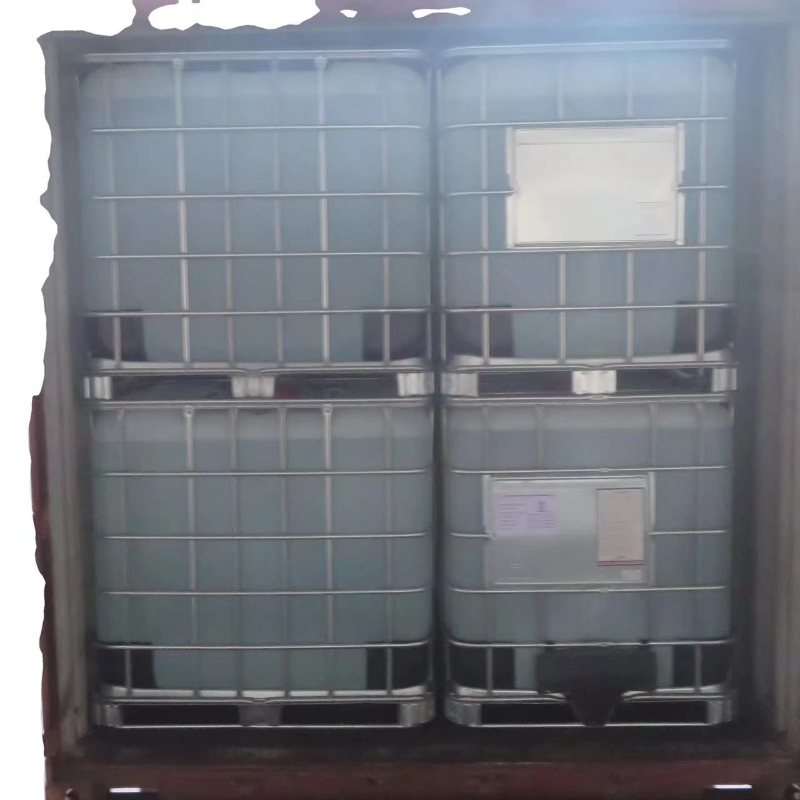-
Categories
-
Pharmaceutical Intermediates
-
Active Pharmaceutical Ingredients
-
Food Additives
- Industrial Coatings
- Agrochemicals
- Dyes and Pigments
- Surfactant
- Flavors and Fragrances
- Chemical Reagents
- Catalyst and Auxiliary
- Natural Products
- Inorganic Chemistry
-
Organic Chemistry
-
Biochemical Engineering
- Analytical Chemistry
- Cosmetic Ingredient
-
Pharmaceutical Intermediates
Promotion
ECHEMI Mall
Wholesale
Weekly Price
Exhibition
News
-
Trade Service
On November 24, 2021, the World Health Organization (WHO) received the first report of the mutant from South Africa and listed it as a Variant of Concern (VOC) two days later
.
In fact, the Omicron subtype BA.
2 quickly replaced BA.
1 as the predominant strain
.
The Omicron outbreak that Hong Kong, China is experiencing belongs to this subtype
.
However, the latest British report shows that the new coronavirus continues to recombine, especially the recombination of BA.
1 and BA.
2, which has attracted attention, one of which is named XE
.
According to existing data, the infection time of XE is significantly shorter, and its transmission speed may be 10% higher than that of the mainstream Omicron, which means that it may be more infectious than BA.
2! On March 28, a research team from the University of Hong Kong posted on the preprint website that after excluding co-infection and sample contamination, the BA.
1/BA.
2 recombinant mutant (XE) was detected in passengers arriving in Hong Kong in February 2022.
Infected
.
On April 2, the results of the case study were reported on Medrxiv
.
A total of 2 patients were reported in this report
.
Patient 1 had a sore throat and cough in late January 2022, while patient 2 was asymptomatic
.
Both patients received two doses of the COVID-19 vaccine (Pfizer), and two patients received a second dose in November 2021 and June 2021, respectively
.
No similar BA.
1/BA.
2 recombinant sequences were found in GISIAD and Genbank, suggesting that this is a new recombinant
.
The BA.
1 region of the recombinant virus is genetically similar to the BA.
1 sequence found in Europe and the United States, while its BA.
2 region is identical to the BA.
2 sequence from multiple continents
.
As can be seen from the above figure, these two patients have partial mutations in BA.
1 and BA.
2, relatively speaking, BA.
2 is more
.
Among them, in terms of S protein, it is completely BA.
2 mutation, which means that its infection ability is similar to BA.
2.
British research believes that it is 9.
8% higher than BA.
2, which is possible
.
In ORF1ab, BA.
1 is fully inherited
.
And ORF3a, M, N, ORF6 are derived from BA.
2
.
ORF3a and the signaling arresting protein ORF6 suggest that its immune evasion and viral replication are similar to BA.
2
.
Researchers of 29 proteins and functions of SARS-CoV-2 said that the high transmission rate of Omicron led to the spread of its BA.
1 and BA.
2 subtypes in multiple regions, which provided conditions for the emergence of recombinants
.
Although the XE variant infected individuals detected in this study were only sporadic cases, the potential impact of this recombinant should not be underestimated
.
This requires long-term genomic surveillance of SARS-CoV-2 on a global scale
.
Although most of the people infected with the new XE variant of Omicron come from Europe, because the virus is more transmissible and most of them are asymptomatic after infection, it should not be taken lightly.
The virus is very likely to spread with the flow of people.
Widespread spread all over the world, which means that it may cause a new wave of new crown epidemics and bring difficulties to the global epidemic prevention work
.
Regarding the function introduction of the new coronavirus genome-related proteins, 29 proteins 1, 16 protein chains of SARS-CoV-2 ORF1ab The first viral protein produced inside cells infected by SARS-CoV-2 is actually 16 proteins chain of proteins bound together
.
Two of these proteins act like scissors to release the protein from the protein chain
.
The cell-disrupting molecule NSP1 is a protein that slows the production of the infected cells' own proteins
.
This destructive behavior forces the cells to produce more viral proteins
.
Mystery protein · NSP2 has not yet determined the function of NSP2
.
The proteins it attaches to may provide some clues, two of which help the endosome move
.
Unlabeling and cleavage protein · NSP3 NSP3 is a protein with two important functions, one is to cleave other viral proteins in order to perform their respective functions
.
It also changes many proteins in infected cells
.
Normally healthy cells mark old proteins for degradation
.
But the SARS-CoV-2 virus can remove these tags, changing the balance of proteins and reducing the ability of cells to fight the virus
.
The vacuole-making protein NSP4 NSP4 binds to other proteins to help form the fluid-filled bubble structure within infected cells, where some of the new viruses are built
.
Protein scissors NSP5 is a protein that frees most other NSP proteins from the protein chain
.
The vacuolar factory · NSP6 cooperates with NSP3 and NSP4 to construct a vacuolar structure for virus production
.
Replication helpers NSP7 and NSP8 are two proteins that help NSP12 make new copies of the RNA genome, which are used to assemble new viruses
.
The cell-centre NSP9, a protein that leaks into the nucleus of infected cells through tiny channels, may be able to influence the movement of molecules in and out of the nucleus - but for what purpose is unknown
.
Camouflage protein NSP10 Human cells have antiviral proteins that recognize and degrade viral RNA
.
NSP10 can bind to NSP16 to disguise the virus' genome so it cannot be attacked
.
Replication machinery · NSP12 This protein assists viral genome replication
.
Researchers have found that in other coronaviruses, the antiviral drug remdesivir interferes with NSP12
.
Another sequence, NSP11, overlaps with a portion of the RNA encoding NSP12
.
But it was unclear whether the tiny protein encoded by the gene had a function
.
RNA unwinding protein NSP13 viral RNA will become entangled
.
Researchers speculate that NSP13 can unwind tangled RNA strands for replication or protein translation
.
Viral proofreader NSP14 NSP12 sometimes makes mistakes when assisting with viral genome replication
.
NSP14 can correct these errors
.
Cleanup protein NSP15 The researchers speculate that this protein shreds remaining viral RNA to evade the body's antiviral defenses
.
Cryptin · NSP16 Together with NSP10, NSP16 hides the viral genome from proteins that cut viral RNA
.
2.
Spike protein S The spike protein is one of the four structural proteins S, E, M and N that form the outer layer of the coronavirus and protect the internal RNA
.
By forming trimers, the S protein forms distinct spikes on the virus surface
.
Part of the spike can extend and attach to the protein of ACE2 (shown in yellow), and the virus can then invade the cell
.
12 bases have been inserted into the spike protein gene of SARS-CoV-2: ccucggcgggca
.
The mutation may help the spikes bind more tightly to human cells
.
Many research groups are currently designing drugs to prevent the spike protein from attaching to human cells
.
3.
Escape Expert · ORF3a The SARS-CoV-2 genome also encodes a set of so-called "auxiliary proteins"
.
They help change the environment inside the infected cell, making it easier for the virus to replicate
.
The ORF3a protein punches holes in the membranes of infected cells, making it easier for viruses to escape
.
4.
Envelope protein ·E Envelope protein is a structural protein
.
Once the virus is inside the cell, it can lock onto proteins that help turn the infected cell's genome on and off
.
5.
Membrane protein·M Another structural protein that forms the viral coat
.
6.
Signal blocking protein ORF6 This protein prevents infected cells from sending signals to the immune system
.
It also blocks some of the cell's own antiviral proteins
.
7.
Viral escape protein ORF7a When new replicating viruses try to escape the cell, the cell can trap them with a protein called tetherin
.
Several studies have shown that ORF7a reduces tetherin expression in infected cells, allowing more virus to escape
.
The researchers also found that the protein can trigger the suicide of infected cells, causing damage to the infected tissue
.
8.
Mystery protein ORF8 The gene of this protein in SARS-CoV-2 is significantly different from other coronaviruses
.
Researchers are exploring its role
.
9.
Nucleocapsid protein·NN protein can protect viral RNA and keep it stable inside the virus
.
Many N proteins are linked together in long helices, wrapping RNA
.
10.
The RNA fragments of ORF9b and ORF9c encoding proteins ORF9b and ORF9c overlap
.
ORF9b can block interferon and resist the body's virus defense, but the role of ORF9c is still unclear
.
11.
Mystery protein ORF10 The close relative of SARS-CoV-2 does not have the gene for this tiny accessory protein, and its purpose is unclear
.
12.
The RNA end of SARS-CoV-2 The genome of the coronavirus ends with a small piece of RNA, which terminates protein translation, and then ends with a repeated aaaaaaaaaaaaaa sequence
.
Reference [1] Haogao Gu, et al.
Detection of a BA.
1/BA.
2 recombinant in travelers arriving in Hong Kong, February 2022.
doi: https://doi.
org/10.
1101/2022.
03.
28.
22273020[2] Fan Wu et al.
, Nature; National Center for Biotechnology Information; Dr.
David Gordon, University of California, San Francisco; Dr.
Matthew B.
Frieman and Dr.
Stuart Weston, University of Maryland School of Medicine; Dr.
Pleuni Pennings, San FranciscoState University; Journal of Virology; Annual Review of Virology.
Written by | Editor by Little Doctor |







